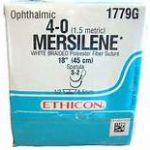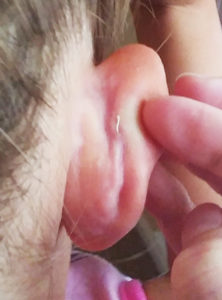Otoplasty is the most common ear reshaping procedure for prominent ears. Known as ear pinning, it achieves its result by bending the ear cartilage back into a better position and stabilizing them with sutures. In the short term it is the sutures that maintain the new ear position and a loss of their tension or knot stability would be detrimental for the desired aesthetic result. In the long term (may months) it is the scar tissue that holds the reshaped cartilage and eventually the cartilage will lose its memory.


Fortunately such otoplasty suture issues can be easily solved. The exposed suture must be removed. In some cases it can be simply pulled out. In other cases the knot must extracted under local anesthesia. Removal of the suture does not affect the otoplasty result.
The occurrence of long-term suture extrusion in otoplasty surgery is very low. But it can occur at any time over a patient’s lifetime. Given that many otoplasties are done in very young patients, it may not occur for decades. Just to prove that point I removed an extruding suture from an 82 year-old that had an otoplasty done in 1947!
Dr. Barry Eppley
Indianapolis, Indiana


